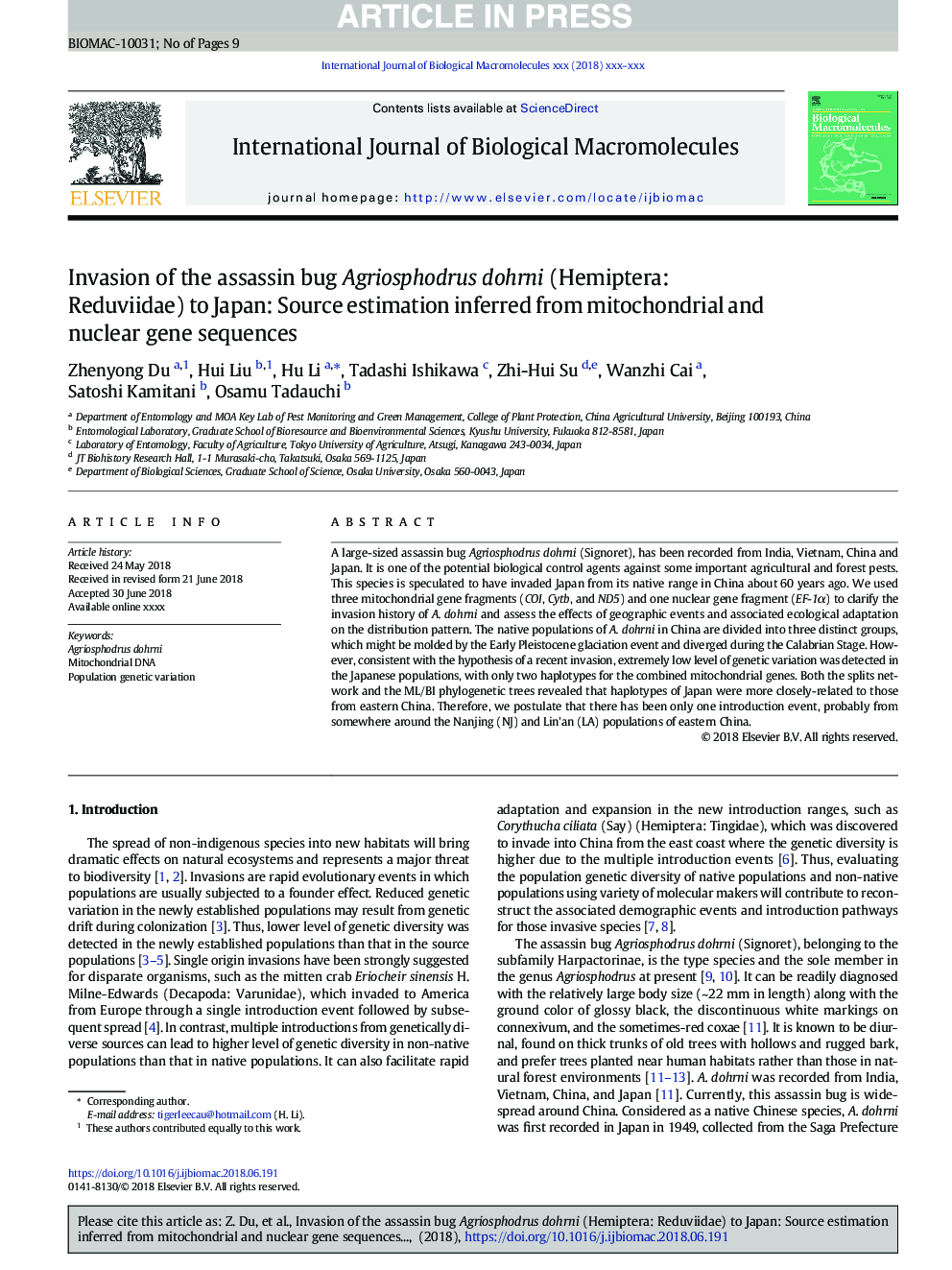| Article ID | Journal | Published Year | Pages | File Type |
|---|---|---|---|---|
| 10156850 | International Journal of Biological Macromolecules | 2018 | 9 Pages |
Abstract
A large-sized assassin bug Agriosphodrus dohrni (Signoret), has been recorded from India, Vietnam, China and Japan. It is one of the potential biological control agents against some important agricultural and forest pests. This species is speculated to have invaded Japan from its native range in China about 60â¯years ago. We used three mitochondrial gene fragments (COI, Cytb, and ND5) and one nuclear gene fragment (EF-1α) to clarify the invasion history of A. dohrni and assess the effects of geographic events and associated ecological adaptation on the distribution pattern. The native populations of A. dohrni in China are divided into three distinct groups, which might be molded by the Early Pleistocene glaciation event and diverged during the Calabrian Stage. However, consistent with the hypothesis of a recent invasion, extremely low level of genetic variation was detected in the Japanese populations, with only two haplotypes for the combined mitochondrial genes. Both the splits network and the ML/BI phylogenetic trees revealed that haplotypes of Japan were more closely-related to those from eastern China. Therefore, we postulate that there has been only one introduction event, probably from somewhere around the Nanjing (NJ) and Lin'an (LA) populations of eastern China.
Keywords
Related Topics
Life Sciences
Biochemistry, Genetics and Molecular Biology
Biochemistry
Authors
Zhenyong Du, Hui Liu, Hu Li, Tadashi Ishikawa, Zhi-Hui Su, Wanzhi Cai, Satoshi Kamitani, Osamu Tadauchi,
